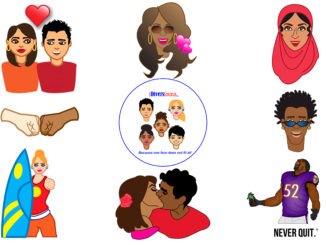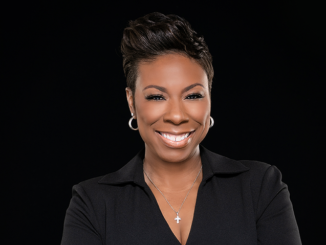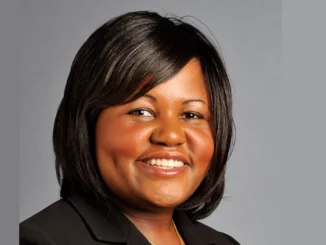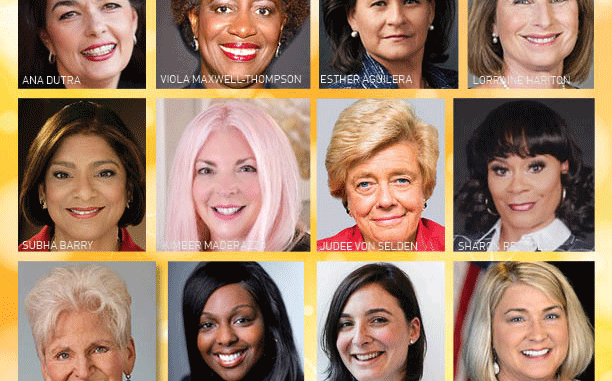
This story first appeared our sister publication Women Leadership Magazine
Edie Fraser Chief Executive Officer Women Business Collaborative
We are so honored to share this special issue that highlights the work of The Women Business Collaborative (WBC). As you’ll see in these pages, the organization is made up of influential business leaders who are focused on creating greater equity and empowerment for women in the workplace. WBC was founded in 2018 by Edie Fraser, a powerhouse whose incredible career is built on a belief that connection and collaboration can accelerate change.
She’s written or co-authored eight books on topics ranging from diversity and women in entrepreneurship in America to philanthropy and the power of individual giving. She has profiled hundreds of CEOs and other executives leading the way on fostering more diverse workplaces. Edie has been a founding member and early supporter of groups like the National Association of Women Business Owners (NAWBO), the Business Women’s Network (BWN) and the Committee of 200 (C200). Just before founding WBC, Edie worked with Diversified Search CEO Judee von Seldeneck, to build and launch STEMconnector® and Million Women Mentors (MWM ) that worked with major companies, universities and non-profits to get more women into stem fields and to provide mentorship, sponsorship, internships, apprenticeships to help women advance professionally.
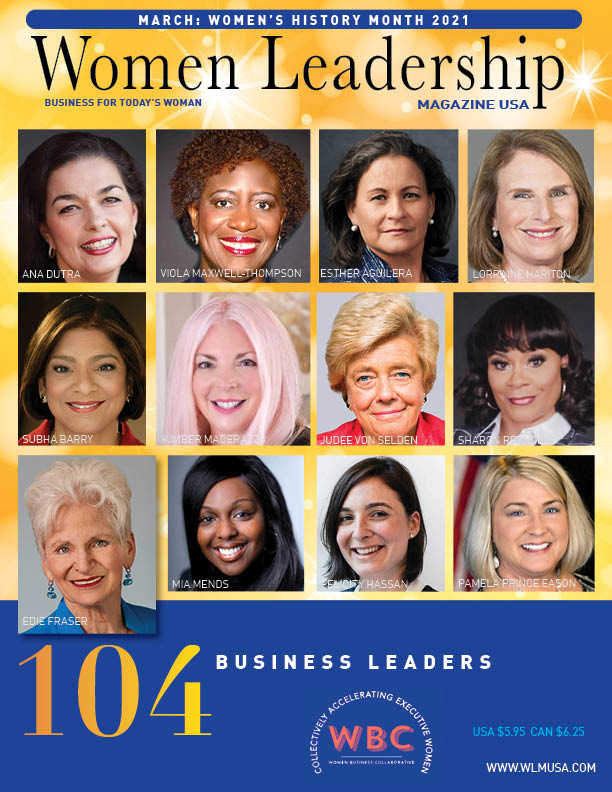
Using data and collaboration to drive change began early for her. Edie started her career in the Peace Corps doing college recruiting and as a Desk Officer for Africa. She spent a year visiting economically underserved communities across the U.S. from inner city neighborhoods like Watts and Huff to migrant camps and Native American reservations, and worked throughout Appalachia, gathering data for the U.S. Poverty Program to help drive better solutions for providing more support and pathways for upward mobility for all Americans. She founded and ran her own public affairs firm focusing on issues like the Panama Canal Treaties and the Labor Law Reform campaign.
For all these reasons, Edie’s views on the opportunity and challenges of these unprecedented times are more important than ever.

WLUSA MAGAZINE: Edie, we’re thrilled to talk with you. Let’s start out by talking more about how WBC got started. Describe the work of the organization, how it got started and what inspired you to start it?
Edie Fraser: First, thanks to Women Leadership USA Magazine for producing this special issue with WBC. We are thrilled to partner on this special tribute to women changing the face of business. Profiled in these pages, you will see champions and leaders from our WBC Board, Partners, Advisory, and Leaders Councils. They represent a small slice of those who, through their words, actions and vision, are shaping a new future for our country and our world.
In 2018, after years of devoting my energy to addressing issues around women and diversity my colleagues and I recognized the barriers still facing women – and women of color in particular – to women truly reaching equal footing with men in business. Despite all the great work that was happening thanks to an array of individual groups, progress was still slow. In 2018 The World Economic Forum published a report that showed despite some successes, at the current rate, it would take 108 years for women to reach gender parity with men in terms of economic opportunity, political empowerment, and educational attainment. We saw dozens of passionate, committed groups working to help make change, but they weren’t really talking to each other. Despite the efforts of so many dedicated leaders, we were still falling short.
I knew we all shared a common passion and a commitment to the bigger goal, and I believed that if we could harness the power of the collective, we could accelerate impact. The most life-changing innovations, the ideas that have companies and societies to grow and flourish, have all started with a simple question: what if? So we asked, what if we built a collaboration of women’s business organizations and together drove change? What if we built a movement to advance and accelerate women as senior executives, as successful entrepreneurs, and board members? What if we supported more women becoming venture capitalists to unlock the resources needed to fund those leaders and the ideas that have been historically overlooked or undervalued? WBC was born as the vehicle to do just that.
We had the first meeting of WBC in March 2019 and found in one another authentic leaders who aligned a desire for change with action and goals: accelerating us faster towards equal position, pay and power. The challenge to create something greater than the sum of our individual parts was so exciting.
Subha Barry, CEO of Working Mother Media, summed up our vision at the initial WBC first Summit in May of 2019: “As a coalition, we will walk together and walk far. We will pick each other up when we tire, and we will cheer each other on as we find success. But make no mistake, we will reach high, dream deep, and achieve goals as a team.”
In creating WBC, we pulled the women’s business groups together and started harnessing their collective competence, connections, commitment, and passion. We pulled together 23 at that time (we are now 44) of the leading women’s business organizations and leading experts to review both the how and the targets.
We reviewed 100 studies and their baseline data to understand where we stood on executive women, boards and entrepreneurship and capital, diversity, and parity. Upon this review we analyzed they key levers of change: what we call the Nine Action Initiatives, and set targets for each of the Nine Action Initiative’s
This data stood as the basis for setting 2025 goals on each of the Nine Action Initiatives. We have set accelerator goals for all nine. You can read about them more in-depth at www.wbcollaborative.org/what-we-do
To date, WBC has united more than 44 leading women’s business organizations, activating our vast network to attain immediate and long-term results around nine essential action initiatives – initiatives that will accelerate progress towards our vision of equal position, pay and power for all business women. We leverage one another’s strategic priorities, competencies, and networks toward accelerating gender and pay parity and the achievement of the full partnership of diverse men and women leaders. Together, we envision a day when the headline about a woman or person of color being named CEO of Fortune 500 Company, or whose start-up achieves unicorn status, is the norm, where capital is funneled toward supporting business women entrepreneurs. We know that with clear goals and strong commitments strong, we can be the change we wish to see in the world. I love the way Melissa Peake, AWS, WBC Board member and Founding Chair, WBC Advisory Council, put it: “There is nothing a group of women, aligned to a common set of goals, supported and championed by those who ‘get it,’ cannot do!” I couldn’t agree more and that’s why we created the hashtag #WBCFasterTogether. In just two years, WBC has gone from an idea to a movement. I am grateful every day to be a servant leader, excited to work with several thousand other women – and men – to drive progress for gender equality.

WLUSA MAGAZINE: You touched on WBC’s Nine Action Initiatives. We profile them in-depth on page 20 of the issue, but tell us a little more about what they are and why they are your focus.
Edie Fraser: Yes. The work of the Nine Action Initiatives includes elevating more women to CEO and supporting those who are in the role, getting more women into the C-Suite and into roles with P&L authority, increasing gender and diversity on boards, ensuring greater access to capital so more women can start their own businesses, parity of power and pay in the workplace, and supporting more women in technology fields. The success of everything we do starts with a strong pipeline, so creating and strengthening that pipeline is key. That means championing workplace cultures and policies that support women so they can be leaders at every stage of their career, that they see a clear pathway to rise through the ranks and assume those positions of decision-making power. And finally, the thread that runs through all of it: diversity, equity and inclusion. So often in the past, we’ve seen women make gains – and we’ve rightfully celebrated those gains – but as we look closer, we see that white women have made a larger share of that progress than our BIPOC sisters. If we want to create real change in business, the kind that drives growth, innovation and creates companies fit for purpose for the future, we must take a holistic and intersectional view of what it means to champion women. So, you’ll see that every WBC Initiative includes a benchmark of least 25% in increased diversity beyond just gender. CEOs across the board, and especially in the tech sector – companies like Microsoft, Cisco, Apple, IBM, Amazon/AWS, and Salesforce, and others – are under enormous pressure to put more diverse talent at the top. We are so proud to work in our way to support their leadership in helping to drive that change.
You asked about the “why” earlier, and that part is consistent across our Nine Action Initiatives: all of our efforts are centered around elevating women to greater positions of power and influence – in terms of title, decision-making ability and access to capital and resources it takes to make that happen. In business, we love to say, “what gets measured, gets done,” so a critical component is tracking, reporting, and “shining a light” on success. WBC is calling society to action. By arming key stakeholders — including CEOs, Chief Diversity Officers, community leaders, consumers, and employees– with resources and data around the issues impacting our nine focus areas, highlighting the efforts that are working – and who is falling short. Employees, consumers, investors, and other key stakeholders expect accountability. We are also their collective voice, demanding accountability and measuring the results.
WLUSA MAGAZINE: That focus on accountability is important. It feels like a part of the diversity conversation that has not gotten enough attention. What does accountability look like to you?
Edie Fraser: We’ve created a series of goals with the year 2025 as our first major time horizon. We use regular reporting and data briefs, providing updates on a quarterly basis. We hold each other accountable with a twice-a-year Collaboration Report, which measures the work of our member organizations and the WBC itself against our 2025 goals. The report measures progress and outlines the strategy moving forward to advance further toward our goals. It not only serves as a tool for accountability but a way to celebrate success and lift each other up. We believe that #WBCstrongertogether means that when one of us has a “win,” we all win.
Our featured 2025 Nine Action Initiative goals
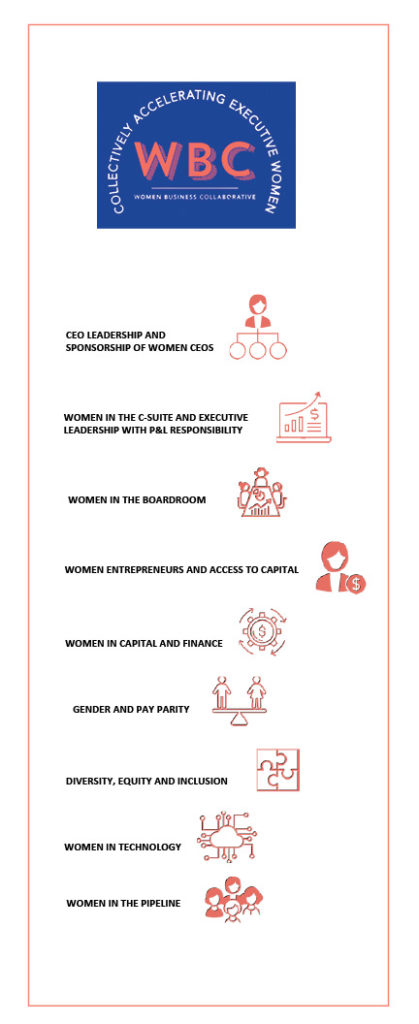
For more details and goals on each Action Initiative, visit page https://www.wbcollaborative.org/what-we-do
WLUSA MAGAZINE: You touched on this a bit already but talk more about why the diversity piece is so important.
Edie Fraser: I founded Diversity Best Practices (DBP), a resource hub on diversity for organizations, years ago and fought over decades to help business harness the power of diversity. We see today that diversity, equity, and inclusion – and now as many corporations are using – engagement – are all crucial to our economic future. Study after study have shown that diversity has net positive impact on results. We also know that America’s demographics are increasingly more diverse, and our leadership should reflect that. There has been a seismic shift in the United States over the past 50 years. For the first time in the U.S., white people make up less than half of the population under the age of 16, according to Brookings Institute. Millennials now represent 30 percent of the population and are the most diverse generational cohort in U.S. history. Generation Z, coming up behind them, even more so. By 2040 people of color will be the majority. Today five states are majority minorities. Today more than a quarter of American adults are immigrants or the American-born children of immigrants. This is ultimately a question of staying relevant in a rapidly changing environment. These shifts mirror other changes in the business landscape that have caused massive disruption to existing business models.
WBC’s accelerator goals hinge on corporations being deliberate about women of color in leadership. Business leaders are pushing – and being pushed – to make a real commitment to diversity in the boardroom, C-Suite changing, and in our supply chains. Being diverse is good business, and it impacts our economy and our national well-being. COVID-19 and the recession combined with tensions over the continued racism in America have created multiple, parallel crises: in health care, in our economy, and in our communities, fueling unrest and a louder call to action. Business is heeding the call. In corporate America, our CEOs and Chief Diversity Officers (CDOs) are crucial to successfully navigating these challenges. They must drive change and build pipelines of diverse talent and address equity and parity. We need leaders who demonstrate courage.
More CEOs are seizing the opportunity to embrace the role of Chief Diversity Officer as a core part of what it means to lead the company. Black Lives Matter is not just a hashtag but a real imperative that demands measurable results. We see the real impact that the COVID-19 crisis is having on women in the workforce – and disproportionately on women of color. Collectively women have lost a million jobs over the past year. That should worry every single one of us who cares about the long-term health of our communities and our economy. This is where the pipeline conversation is so important and why WBC strives to elevate women of color from entry-level all the way to the boardroom. This kind of holistic focus on women’s progress is mandatory for success, in my opinion. Today more than ever, Chief Diversity Officers are at the forefront of ensuring that transparency around hiring, representation, advancement, and management practices is crucial. Collaboration and accessible data will improve organizational DE&I and make significant leaps to build equity in the workplace. The CDO role is not for the faint of heart. CEOs and executive leadership, and boards of directors must be committed. It is not merely about numbers; CDOs must educate and provide executive leadership with the tools to tackle operational and social challenges. Conversations are challenging, but they are critical to our ability to adapt and act. There is no doubt the talent is there. We have an entire untapped market of women and people of color who are equipped and ready to make meaningful contributions in corporate America. We must measure the results, celebrate the success and shine a light on where more progress is needed.
The focus on gender equity and diversity will mean companies need to think differently about their current approach, whether it relates to the future of work and a greater proportion on remote workers, recalibrating to address changes in a diversifying consumer base, retooling how supply chains function and, potentially, redefining business performance metrics. Leaders are rapidly making changes to the way they lead innovation by engagement of their workforces; reinventing collaboration; embracing stakeholder capitalism; and putting greater emphasis on leading with empathy and building a different level of trust with their employees. I think of that last part as putting equal emphasis on your “to be” list as you do on the traditional “to do” list. As one CEO recently put it, the crisis has led to an “acceleration of the future.” Great leaders see this moment in time as a unique opportunity for self-calibration and mapping out a strategy for transformation that works for their respective organizations. We prolife many of these stories in our “CEO Leading” series. You can hear more of these insights at https://www.wbcollaborative.org/insights under “webinars”.
WLUSA MAGAZINE: You care deeply about giving and philanthropy. Why is that so important to you and how does that value reflect back in the work of WBC?
Edie Fraser: I strongly believe that giving and philanthropy help us to live our values, to reinforce the impact we can make and shape the legacy we leave for future generations. I live by a simple motto: if you have resources, use them in your lifetime. I love how Melinda Gates framed it: “Philanthropy is not about the money. It’s about using whatever resources you have at your fingertips and applying them to improving the world.”
In other words, if you have the means, no matter how small, then you should give. Beyond financial giving, if you can find time, which I believe we all can if we are motivated enough, then give that time. I believe we all the power to make a difference.
Our WBC Partner organizations embody this spirit of giving, and supporting their efforts is a great way to give back. I think in particular of C200 who stepped up this year to give $650,000 in grants to women entrepreneurs of color, women who have historically been shut out from most venture capital and other traditional funding sources.
Each of us members has groups they are proud to support. I try to support at least 10 a year. One is Enterprising Women Foundation, which gives promising young high school STEM entrepreneurs, mostly from underserved neighborhoods, resources they need to chase their dreams. Their stories are so impactful, and it inspires me and others to want to support – and celebrate – their success.
Speaking of which, I want to highlight an initiative I’m particularly excited about. WBC is lucky to partner with Pat Shea, and with her Givful message to create a multi-media campaign around this message of philanthropy and sharing your resources with causes you care about. The campaign features 100 short videos and a forthcoming book that Pat will co-author with WBC leadership.
WLUSA MAGAZINE: You have talked a lot about the idea of stronger together. Tell us more about some of the leaders you work with at WBC to help make the organization’s vision a reality:
Edie Fraser: Our focus is #WBCFasterTogether and that also means further together. As Hilary Clinton said, it takes a village. WBC could not do its work without its own village, this includes our board of directors, and our organization partners, our advisory council and more than 275 champions – leaders across the busines and non-profit sector who give their time to amplify our message and further our work. We have corporate sponsors and corporate friends because we know the private sector is key to making a real difference. All the stakeholders have a leadership role to play. It is a giant puzzle with so many holding the pieces to make a stunning whole. It is weaving together the voices of individual leaders to make the collective. As I said, I believe in thinking deeply about the legacy you want to leave and living that every day, and our WBC leaders share that view.
I think of the CEOs who have championed WBC and who highlight the power of tone at the top on driving change. These include WBC Board members, Robert Reiss, Chairman and CEO, The CEO Forum and Becky Shambaugh, CEO of SHAMBAUGH Leadership. We thank Jose’ Zeilstra, CEO, Gender Fair and Jodi Hanson Bond who are on the CEO Committee. It is their leadership, and that of many others in WBC, that propels us all forward.
I love this quote from Ana Dutra, CEO, Mandala Global Advisors, WBC Board and Chair of the WBC Board Initiative. “Become a part of a team of people who challenge and inspire you; spend a lot of time with them; engage and share with them and, together, you will change the world. Revolutions are never done by one person only; they’re done my teams of people committed to a higher purpose.” I think it sums up perfectly the spirit of our collaboration and what has made this work so powerful – at the end of the day WBC is a collective of people and organizations and our power is in that collective, that collaboration.
The WBC Board is significant business leaders giving time and support of the vision and mission. The board has worked on Who We Are as an accelerating movement for business women for over the two years. Collectively our board has given hundreds of hours to help advance our mission and goals. A special thanks to our Board of Directors whose vision and passion drive all that we do.
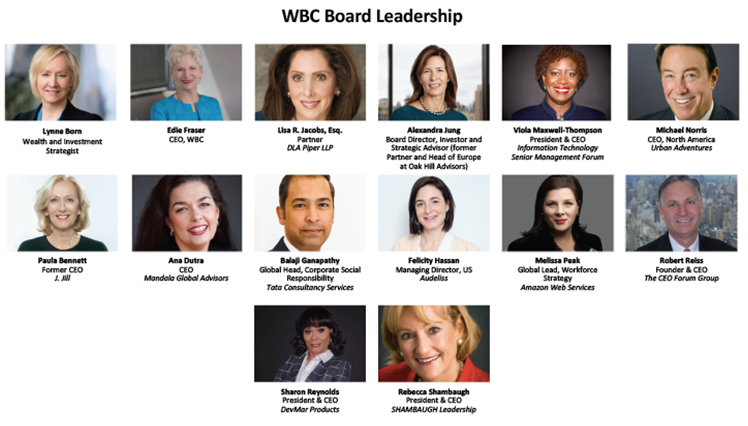
The WBC Advisory Council is a select group of senior women and men executives, board members, corporations, thought leaders, and innovators, who, at the invitation of WBC Leadership, join their fellow change leaders in support of the WBC Mission. WBC commits to maintain at least 35% diversity on the Advisory Council. The 2021 Chairs: Felicity Hassan, Sharon Reynolds and there are 12 Co-Chairs and what a blessing to see those who join recommend others who want to leave a legacy too.
(See page 16)
The WBC Leaders Council is made up of women and men across industries, institutions, and sectors committed to the mission of WBC and accelerating the advancement of businesswomen. The Leaders Council is committed to cultivating the pipeline of businesswomen by leveraging the expertise of our partner organizations and our dedicated champions to fill that pipeline with extraordinary women.
Volunteer Engagement of Stakeholders focusing on core areas of success, is also key. We have over 120 stakeholders who despite busy schedules, give time to WBC to help advance our work. We are grateful to those who give to drive change.
And of course, the WBC “Village” cannot perform without Our Staff team. A big salute to our staff and consultant teams. You hear their names:
● Gwen Young, Chief Operating Officer
● Monique Fray, Executive Liaison
● Elsa Landis, Communications and Programs
Associate
● Erin Cieraszynski, Communications Associate
● Lorena Fimbres, Consultant, Strategic Programs &
Communications
● Mazana Bruggeman, Consultant, Graphic Design
● Chad Capellman, Consultant, Website Design
● Andrea Conner, Leaders Consultant
● Jan DuPlain, PR Consultant
● Alina Turkevych, IT Consultant
WLUSA Magazine: What do some of the “wins” look like? What is giving you hope that this work is gaining traction and moving in the right direction?
Edie Fraser: It’s one of the things I love most about this work – identifying and executing actionable goals and celebrating the wins. Success in 2021 looks like increasing the number of business women in the C-Suite, the boardroom, in technology roles, getting more women the capital to start and grow businesses, ensure that women of color are ever closer to their share of leadership in each sphere. We need the private sector to not just make statements but drive action, and as you say, celebrate success – the wins. As of March 2021, Women CEOs of the Fortune 500 are 8.4% of the total, up from some 5.7 percent just two and a half years ago. We celebrate not only those women but all women CEOs in public and private companies. We shine a light on each announcement together with partners like Catalyst and C200.
CEO pledges are increasing, and so are their commitments to action. Company measurements are key. The Gender and Diversity KPI Alliance (GDKA Alliance) led by Catalyst and Working Mother Media, along with WBC and other partners, is gaining momentum. We witnessed CEOs make commitments on accountability. This is true for GDKA and it is true on Parity with Paradigm4Parity or P4P. In addition, Gender Fair is rating 5,500 companies in five key areas (Leadership and Opportunity, Employee Policies, Advertising and Communications, Diversity Reporting, and Social Responsibility) and we are proud to partner with them on their work.
CEO’s and their CDO with CHRO partners are finding holistic approaches to issues around inequality. That means diversity in all aspects of operations— hiring diverse talent at the top, ensuring diverse hiring pools and pipelines across the organization and creating a diverse supplier base. A holistic approach is first and foremost about authentic leadership. If the CEO and the Board are not fully invested and ready to champion these efforts, they will not get the traction needed to sustain them. Measurement against goals is critical: what gets measured gets done. Elevating the profile of diverse leaders and sharing success stories are also critical.
WLUSA Magazine: As someone who has built a career lifting up and inspiring others, who do you look to for inspiration.
Edie Fraser: I love this question! Learning from others really drives me. I have written eight books on Women and Women’s Leadership: Women’s Quick Facts: Compelling Data on Why Women Matter; Women’s WOW! Facts; Risk to Riches: Women and Entrepreneurship in America; Do Your Giving While You Are Living; Advancing A Jobs Driven Economy: Higher Education and Business Partnerships Lead the Way; The Chief Diversity Officer, The Diversity Primer; CEOs Who Get It, Diversity Leadership From The Heart and Soul; and you published 10 major Leadership Books Highlighting 100 CEOs, 100 Women Leaders in STEM; Business Women’s Leadership Tribute; 100 CIO Leaders; 100 Executive Leaders in Diversity and others. Throughout the process of writing these it was interesting to see the common leadership patterns that emerged. For example, in Business Women Leadership Tribute, I asked a series of questions including “What are the most important traits needed to be a leader today?” and “What are the principles that you, as a leader, apply to your professional and personal life?” What was fascinating to see is the trait most mentioned was “Authentic” and “Authenticity”. Those insights continue to inspire me to this day.
I am of course also inspired by all of the fabulous women leaders who make up WBC. I am also inspired by our male allies who see the power in diversity and use their voices and power to help us create a better future, they are also at the heart of the idea of stronger, together. I look to icons like Ruth Bader Ginsberg who said “fight for the things that you care about, but do it in a way that will lead others to join you,” which has been a guiding light in terms of who I approach in this work. Like so many individuals who fight for gender equity, I often share RBG’s quote, “Women belong in all places where decisions are made. It shouldn’t be that women are the exception.”
Most recently, I – and millions of others – have been inspired by Amanda Gorman who reminds us that there is always light if we choose to see it and be it. These words in the poem she wrote for the Presidential Inauguration especially struck a chord: “In all the bridges we’ve made, that is the promise to glade the hill we climb, If only we dare…to author a new chapter…to offer hope and laughter to ourselves….We will not be turned around or interrupted by intimidation because we know our inaction and inertia will be the inheritance of the next generation.” She was talking about the fate of the country as a whole, but those capture why the collective work of WBC is so important. She shared her salute to health workers at the 2021 Super Bowl and does so with grace, every day. And really, at the end of day, the fate of the country and success of work like ours are inherently intertwined.
I am inspired by Lilly Ledbetter who went from factory worker to activist and eventually won the passage of the Fair Pay Act. The Act amends the Civil Rights Act of 1964 and states that the 180-day statute of limitations for filing an equal-pay lawsuit regarding pay discrimination resets with each new paycheck affected by that discriminatory action. I loved what she said about in 2008: “There will be a far richer reward if we secure fair pay. For our children and grandchildren, so that no one will ever again experience the discrimination that I did. Equal pay for equal work is a fundamental American principle.”
And what about Tarana Burke who as an American activist from The Bronx, New York who started the Me Too movement and Girls for Gender Equity. In 2006, Burke began using me too to help other women with similar experiences to stand up for themselves. She says it with fervor, “Get up. Stand up. Speak up. Do something.”
There are so many more – too many for the space we have here. I’ve shared a few women who inspire and the words that propel me forward.
The purpose of life is to live it, to taste experience to the utmost, to reach out eagerly and without fear for newer and richer experience.” Eleanor Roosevelt
“I realized that if I was willing to step up and be in the spotlight, I’d be able to make everyone else around me much more powerful as well.” Katherine Graham, former CEO of The Washington Post and first woman CEO
“Do what you love, and success will follow. Passion is the fuel behind a successful career.” Meg Whitman former CEO, Hewlett-Packard Enterprise
Lastly, It am continually inspired to see my fellow sisters on the rise in the C-Suite. In February 2021, Jane Fraser shattered the glass ceiling by becoming the first woman to be named CEO of a major Wall Street bank. Karen Lynch becomes CEO of the giant consumer health care company CVS with revenue of $256 billion. Linda Rendle was named CEO at Clorox and Suzanne Clarke was just named CEO of the Chamber of Commerce – one of the most influential business groups in the country. We continue the drive toward our goal of 10% representation by 2025 – and we hope earlier. Yet again, where are the women of color? I salute Walgreens who just named Roz Brewer as CEO, but she is still the only black woman to lead a Fortune 500 company. We will focus our work on making sure she’s not the only one for long there are more. We are all watching and monitoring. Our CEO report helps us keep tabs on – and again celebrate! – the progress here.
WBC salutes so many CEOs, men and women alike who are actively working to drive change.
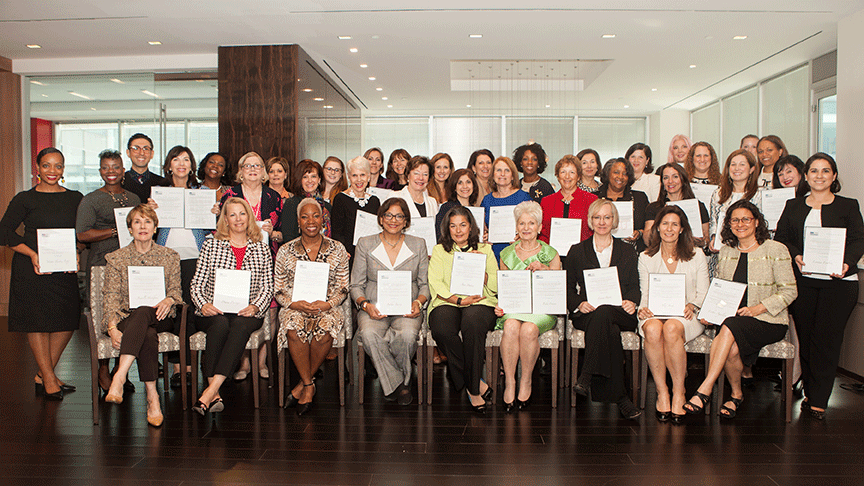
Like women CEOs being appointed-to corporate boards-I see them in action at our WBC Summit and our monthly CEO Roundtables, and their collective voices give me hope and propel me forward. Leaders like Walmart CEO Doug McMillion, Larry Fink at Blackrock and the Business Roundtable are stepping up to say forcefully that diversity matters and outlining their commitments to move the needle on creating racial and gender parity. Blackrock CEO Larry Fink is insisting on Board diversity and investments in black and gender talent at the top. So are the CEOs of so many firms! Employees, customers, investors, and other stakeholders are watching and looking for examples of real leadership in increasing diversity in the c-suite and in the boardroom.

Red the entire issue
WBC PARTNER ORGANIZATIONS
50/50 Women on Boards
100 Women in Finance
ASTIA
ATHENA International
C200
Catalyst
Culture@Work
Diversity Best Practices
Diversity Woman Media
Ellevate Network
Enterprising Women Magazine
Gender Fair
Golden Seeds
Hispanic IT Executive Council (HITEC)
Him for Her
Information Technology Senior Management Forum (ITSMF)
LATINAStyle
Latino Corporate Directors Association
National Association of Investment Companies (NAIC)
National Association for Female Executives (NAFE)
National Association of Corporate Directors (NACD)
Network of Executive Women (NEW)
National Women’s Business Organization NAWBO
Paradigm for Parity (P4P)
PEWIN
SheEO
Springboard Enterprises
theBoardList
The WIT Network
The Executive Leadership Council (ELC)
Thirty Percent Coalition
U.S. 30% Club
WBENC
Watermark
Women in Economic and Leadership Development (WELD)
Women Corporate Directors (WCD)
Women Impacting Public Policy (WIPP)
Women in Fund Finance (WFF)
Women in the Boardroom
Women Presidents’ Organization (WPO)
Women Unlimited
Women’s Forum of New York
Working Mother Media (WMM)
RESOURCE PARTNERS
Bloomberg’s Gender Equality Index
Equilar
DDI
CEOx
Bolster



